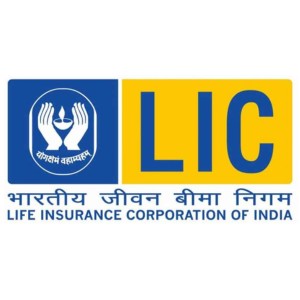
LIC (Life Insurance Corporation of India) is one of the largest insurance companies in India, with a market share of over 70%. The company was established in 1956 by the Government of India and has since been a key player in the insurance industry in India. Recently, the Indian government announced its plans to list LIC on the stock exchange, and this has generated a lot of interest among investors.
LIC IPO price and what investors can expect from the upcoming listing. LIC shares traded at a 52-week high value of Rs 920 in May 2022 after a weak listing on the exchanges. Shares of LIC were listed at a discount of nine percent to Rs 867.20 per share on the BSE against its IPO price of Rs 949.

How does the LIC IPO fit into the government Disinvestment program?
The government’s Disinvestment Programme and the LIC IPO are closely related as the IPO is a part of the government’s broader disinvestment plan. The Disinvestment Programme is a process by which the government sells its stake in public sector enterprises to private investors. The aim of this program is to reduce the government’s fiscal burden, improve the efficiency of the companies, and attract private investment to various sectors of the economy.
The LIC IPO is a part of this program, as the government plans to sell up to 10% of its stake in LIC through the IPO. This will be a major step towards meeting the government’s disinvestment target for the financial year 2021-22, which is set at Rs. 1.75 trillion. The IPO is also expected to attract a lot of investor interest and could result in a significant infusion of capital into the Indian economy.
The Potential of the Life Insurance sector in India
The life insurance sector in India has significant potential for growth in the coming years, driven by a combination of factors such as increasing awareness about the need for life insurance, rising income levels, and the expanding middle-class population.
One of the main drivers of growth in the life insurance sector in India is the increasing awareness about the need for life insurance. As people become more aware of the risks associated with life, such as illness, accidents, and death, they are increasingly realizing the importance of having life insurance. The COVID-19 pandemic has also highlighted the need for adequate insurance coverage, which has led to an increase in demand for life insurance products.
The Indian government has also been taking steps to promote the growth of the life insurance sector. For example, the government has introduced various tax benefits for individuals who invest in life insurance policies, which has encouraged more people to purchase life insurance. In addition, the government has increased the FDI limit for the insurance sector to 74%, which has attracted more foreign investors to the Indian insurance market.
How LIC Dominates the Insurance Market
Life Insurance Corporation of India (LIC) dominates the Indian insurance market in several ways. Some of the key factors that contribute to LIC’s dominance in the insurance market are:
- LIC has a strong brand image in India and is widely recognized as a reliable and trustworthy insurance provider.
- LIC has an extensive distribution network that includes over 3,000 offices, more than a million agents, and a strong online presence.
- LIC offers a wide range of insurance products, including term plans, endowment plans, money-back plans, and unit-linked insurance plans (ULIPs).
- LIC’s products are priced competitively, making them affordable for a large section of the population.
- LIC has a strong financial position, with a high solvency ratio and a large asset base.
- LIC has been in the Indian insurance market for over 60 years and has built a reputation for providing reliable insurance services. The company has a strong track record of honoring claims, which has earned it the trust and loyalty of customers.
Pre-IPO placement and discounts of lic
The pre-IPO placement is a mechanism used by companies to raise capital from investors before the initial public offering (IPO) takes place. In the case of the Life Insurance Corporation of India (LIC), the pre-IPO placement is expected to be used to raise funds to meet the company’s capital requirements.
Although 60% of the QIB portion is probably going to be set aside for anchor investors to reduce uncertainty in the IPO, the LIC won’t be conducting any pre-IPO placements. There is a 10% reserve for policyholders in the LIC IPO. Additionally, a unique discount will probably be offered to policyholders, staff members, and retail investors. Closer to the IPO opening day, further information on the same will be released.
